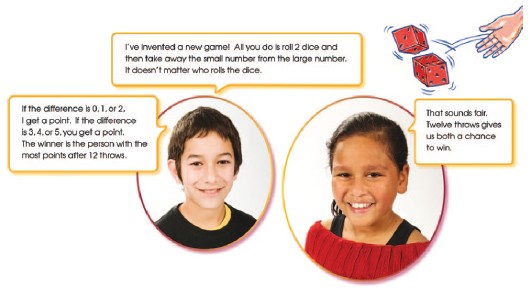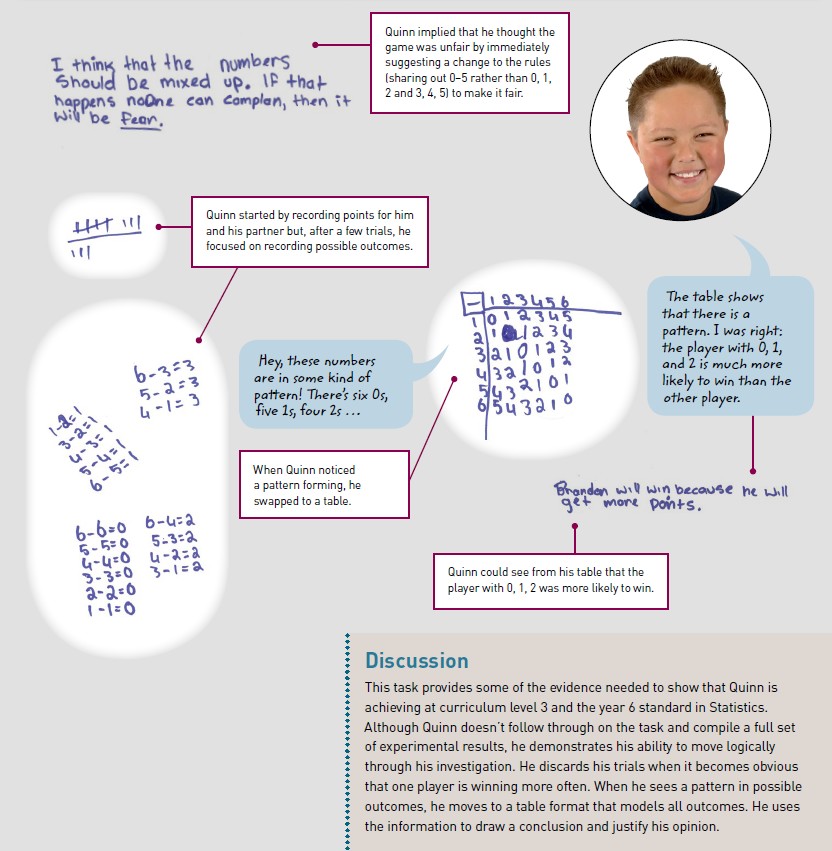
Dicey Differences: Illustrating the year 6 standard
The task used in this illustration was adapted from an activity in Figure It Out, Statistics (Revised Edition), Level 3. The teacher gave the task to her year 5–7 students after a discussion about the “fairness” of games that they were designing for the school gala.
The task relates to achievement objectives for Number and Statistics from the mathematics and statistics learning area in The New Zealand Curriculum.
The Task
Dicey Differences

- Before you play, write down whether you think the game is fair or not and give your reasons.
- In pairs, take turns to throw two dice and record the difference. Use your data set to investigate outcomes that are possible and whether the game is fair.
Some features of students’ work used to make judgments in relation to the mathematics standards are described below. There is also an illustration of the year 5 standard and an illustration of the year 8 standard for this task.
| New Zealand Curriculum: Level 3 | National Standards: By the end of year 6 |
|
In solving problems and modelling situations, students will:
|
|
|
Statistics
|
Statistics
|
Hover over the image to zoom a section. Click on the image to enlarge it. Click again to close.

PDF of this task and Illustrations of the year 5, 6 and 8 standards (1.58MB)